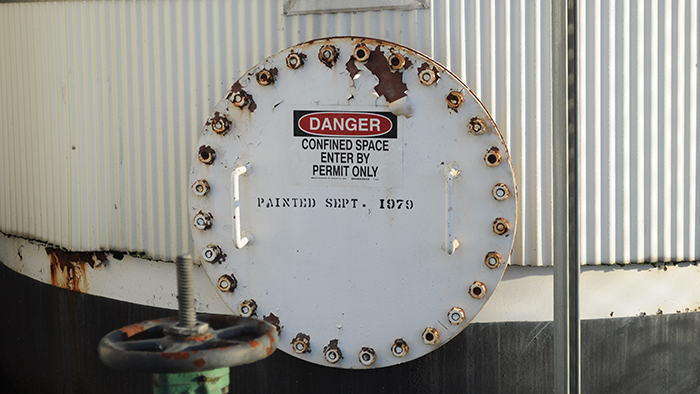The Purpose, Value, & Need of Health, Safety, & The Law
Aug 21, 2019 Occupational Health & Safety Regulations, Opinion
Managing budgets and allocations within an organization are difficult at the best of times. There are never enough resources to go around. Both public and private sectors are challenged to do more, and more, with less, and less. So where do your precious training dollars go? How is compliance to be achieved, and surpassed? How do we ensure the carefully created safety culture is maintained? The answer is simple, ignore the budgets, and train everyone, in everything! Although this is a great mentality, is does not always make good business sense. It is important to separate the “nice to know” from the “need to know.”
As a trainer, I get a firsthand view of what organizations do well, and where there is room for improvement. The area where I find the largest deficiency is regarding the lack of understanding of the Occupational Health and Safety Act. Now everyone should have a basic understanding of their obligations as per the mandatory training required by Regulation 297, but certain parties in the workplace have a higher level of responsibility, therefore require a higher level of understanding. Cue the Supervisor and Worker Health and Safety Representative. These are very important roles within an organization that exist to support the Internal Responsibility System, a topic covered in a previous post. What I am finding is that individuals in those respective roles do not truly understand what the OHSA and the Ministry of Labour expect of them. So where do those limited training dollars go? I would start here.
Purpose
The purpose of any training is to ensure that all employees have a predetermined level of understanding regarding a certain topic. The specific purpose of training your Supervisors and Health and Safety Reps as to their obligations is twofold.
Firstly, you meet legal compliance. OHSA S. 25(2)(a) states that an employer must “provide information, instruction and supervision to a worker to protect the health or safety of the worker.” Now this covers many aspects of actual and potential hazards, but the ability to effectively carry out your role is part and parcel. More specifically, OHSA S. 25(2)(c) states that an Employer must “when appointing a supervisor, appoint a competent person.” A competent person is defined as a person who, (a) is qualified because of knowledge, training and experience to organize the work and its performance, (b) is familiar with this Act and the regulations that apply to the work, and (c) has knowledge of any potential or actual danger to health or safety in the workplace. As an Employer, ask yourself, how well do my supervisors know the law as it relates to what we do? If you do not like the answer, then training might be required.
Health and Safety Representatives have pending requirements as well. OHSA S. 8(5.1) covers the training requirements, “Unless otherwise prescribed, a constructor or employer shall ensure that a health and safety representative selected under subsection (5) receives training to enable him or her to effectively exercise the powers and perform the duties of a health and safety representative”. Now, as this amendment has yet to be proclaimed, as a matter of due diligence, it speaks to the expectations the Ministry of Labour sets out for employers.
Secondly, the purpose of training your Supervisors and Health and Safety Reps is to support the Internal Responsibility System by having an effective safety management system in place. The structure is set out in legal obligations, but ensuring that all parties involved are adequately trained and able to execute their roles to the best of their abilities is paramount in maintaining your sustainable safety culture. The law is the statutory basement; we cannot do less. How to ensure the minimums are being followed involves those at the worker level (inclusive of Supervisors and Health and Safety Reps), to know the difference between legal and illegal.
Value
No one can argue the fact that training is an expense. How efficiently those precious training dollars are spent matters. There has to be a return on investment; there has to be added value to your organization. What value does training your Supervisors and Health and Safety Reps offer? To start, they will learn the law. That dust-covered green book in the lunchroom will get some exercise. It is vital that these parties understand their roles and responsibilities under the act. By recognizing issues when they are small, it can prevent a larger issue from forming that may not have been budgeted for.
Next, are the effective tools used by those maintaining the safety culture.
The Ministry of Labour posted a recommendation in the form of a training standard for Health and Safety Reps that covers the functions of both the Supervisor and Health and Safety Rep. This standard ensures that topics such as workplace inspections, accident investigations, and the R.A.C.E. methodology (Recognize, Assess, Control, and Evaluate), which teaches: hazard identification, risk assessment, hazard safeguards through the hierarchy of controls, and the importance of follow up, are understood and implement where they are needed.
Need
So why is there a need to train Supervisors and Health and Safety Reps for their respective roles? The reason is simple: accidents are still happening, worker safety is put as an afterthought, or ignored because people just simply do not know any different. Knowledge is the best prevention. From asbestos exposure to smoking in the workplace – once the dangers have been recognized, then controls to protect workers can be put in place. Supervisors and Health and Safety Reps are individuals who get direct exposure to the work environment and therefore are in the best position to address them. Then again, how can you expect individuals to be effective if they are not competent for the task? Employers hold the utmost responsibility for worker safety; however, it is often the case that they are not at the worker level. It is vital for the establishment and maintenance of a sustainable safety culture that these individuals have access to every tool to keep the workplace safe. No organization wants to end up listed as a news story on the Ministry of Labour’s court bulletins.
Geoff Rowatt | CHRP | Safety Trainer





